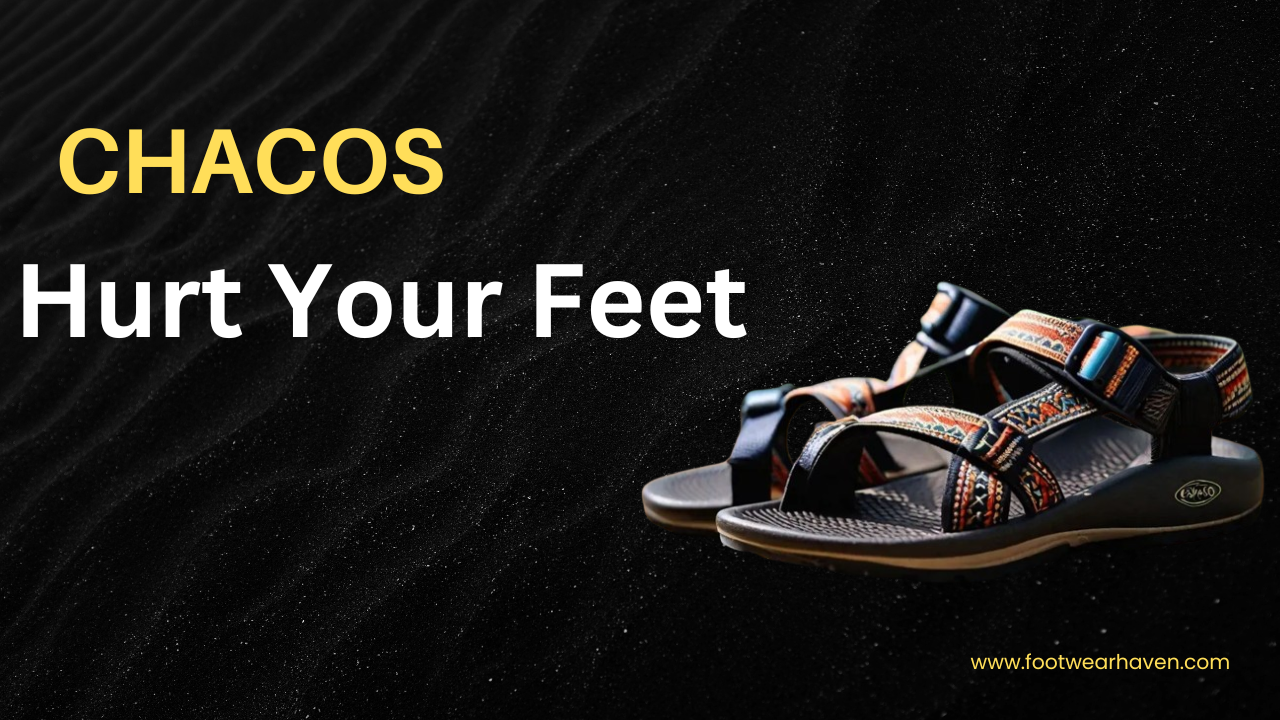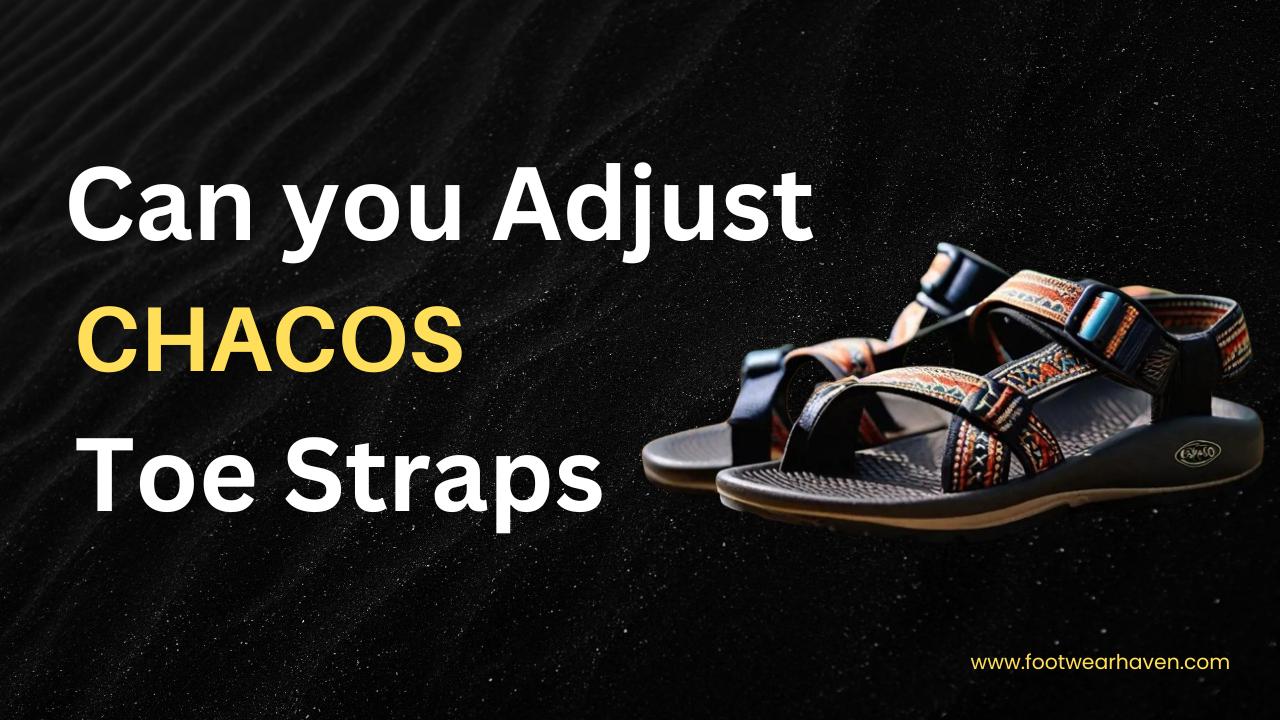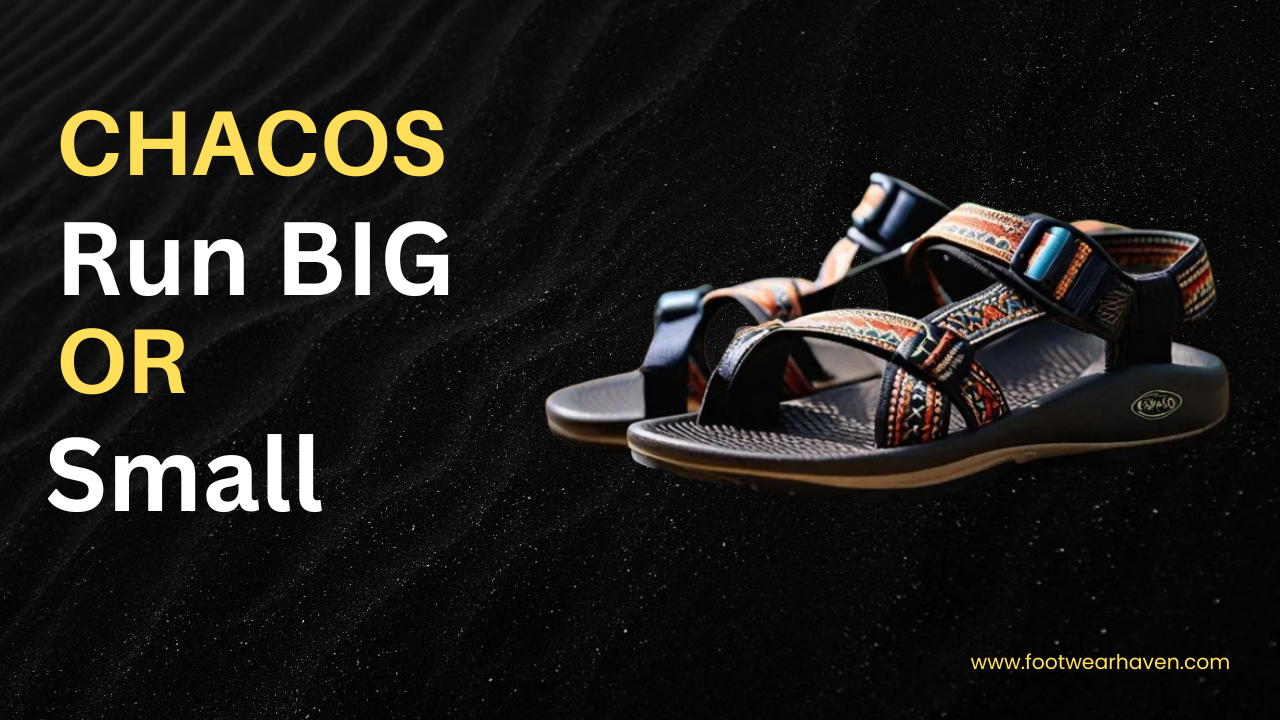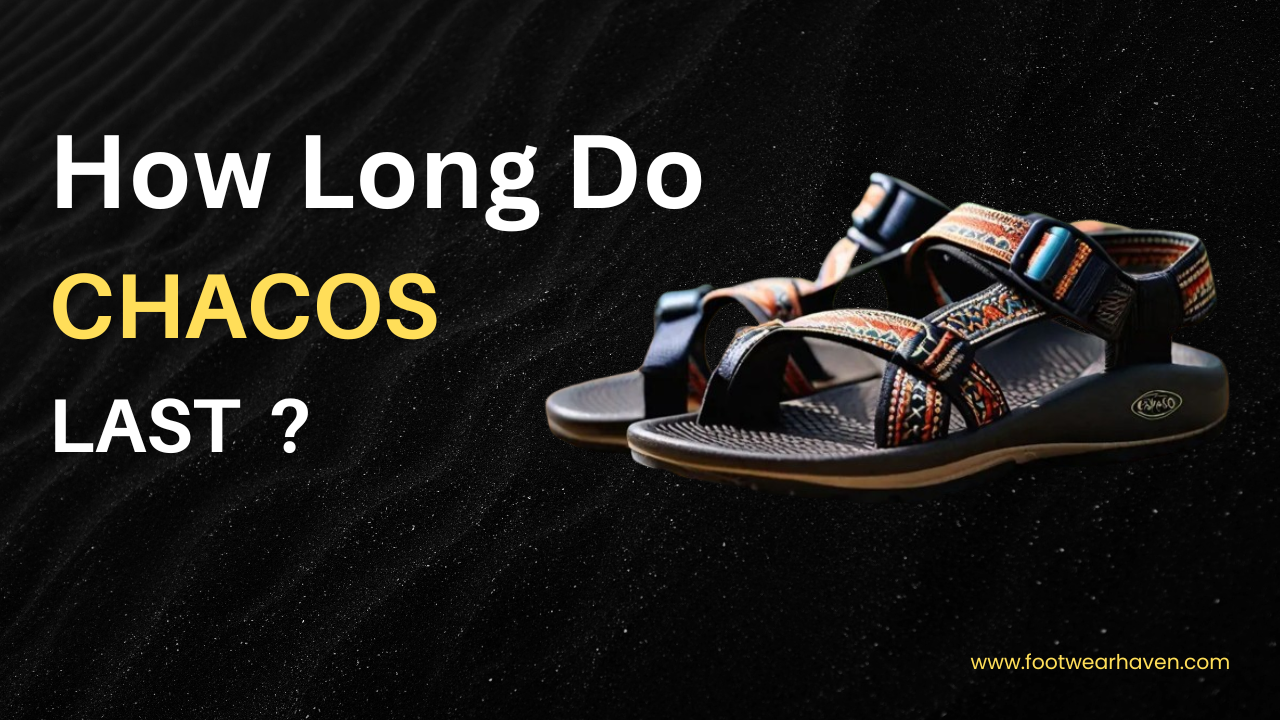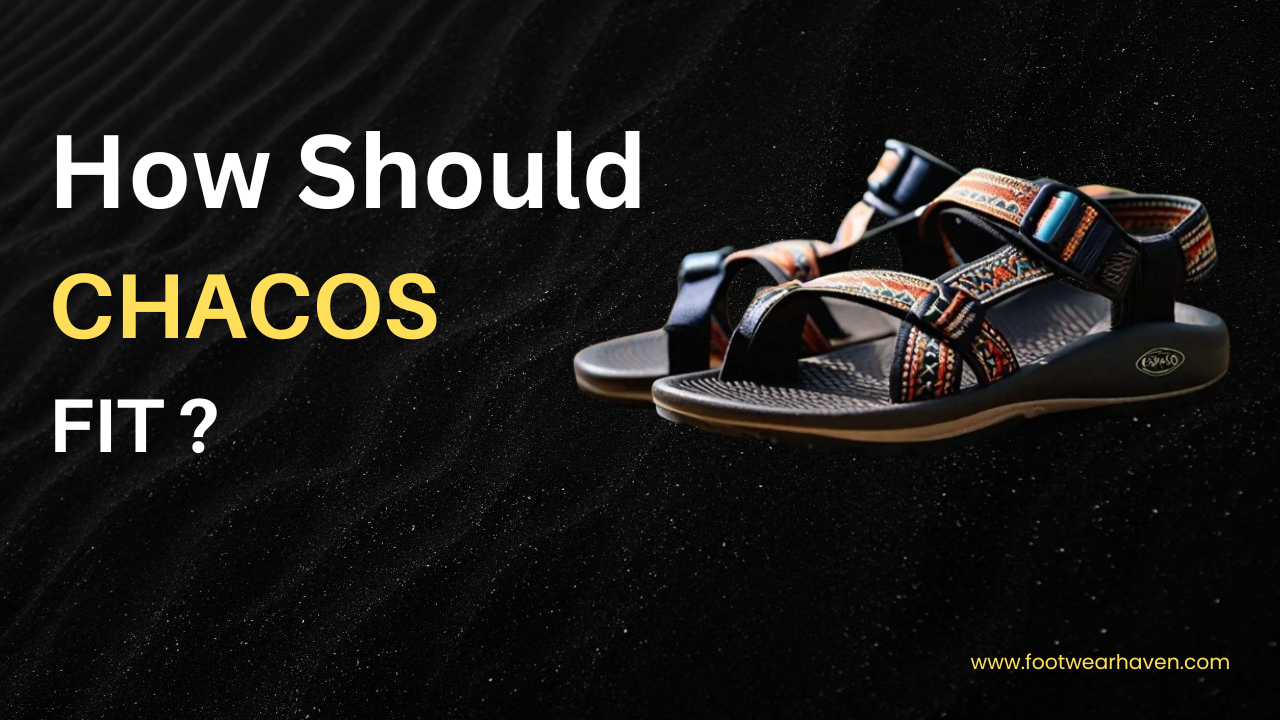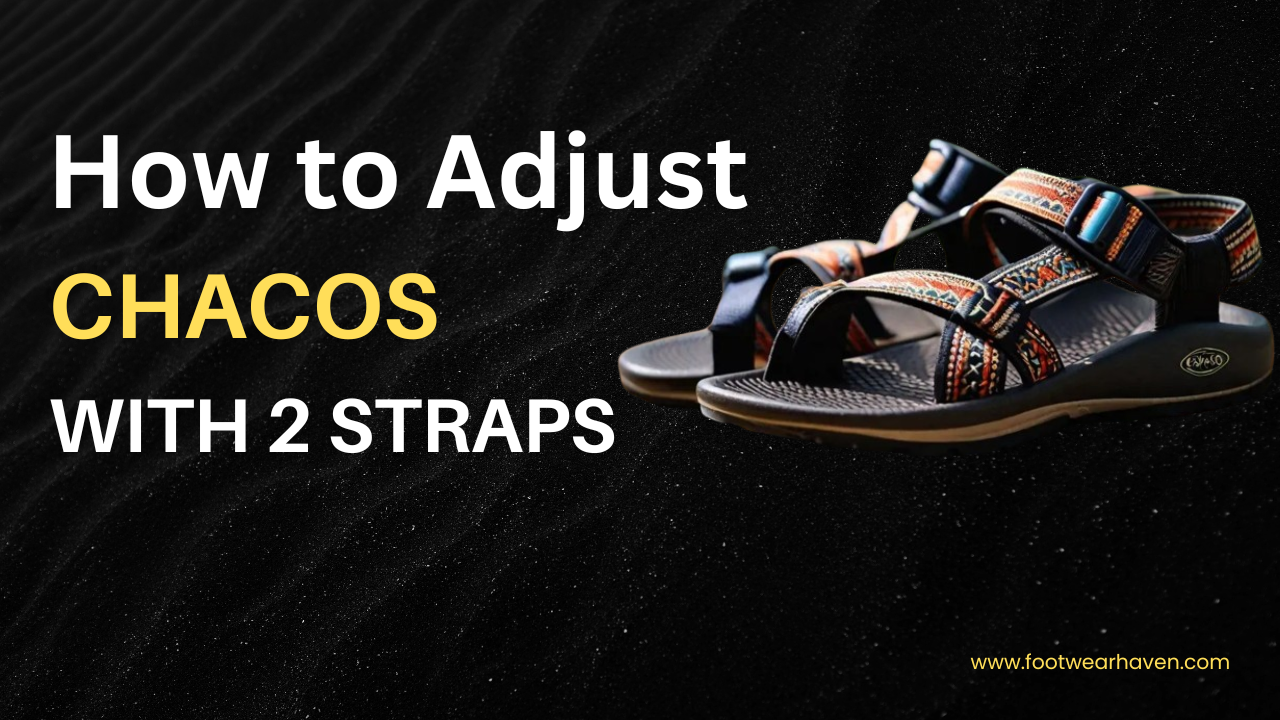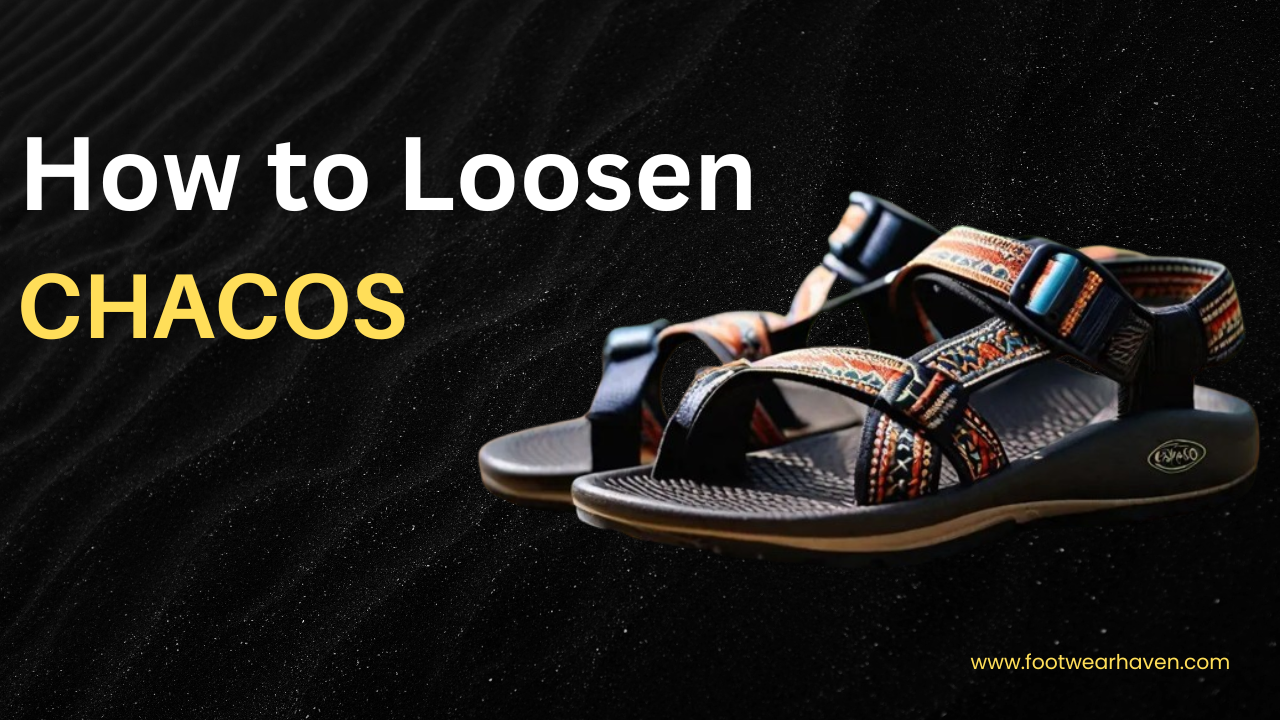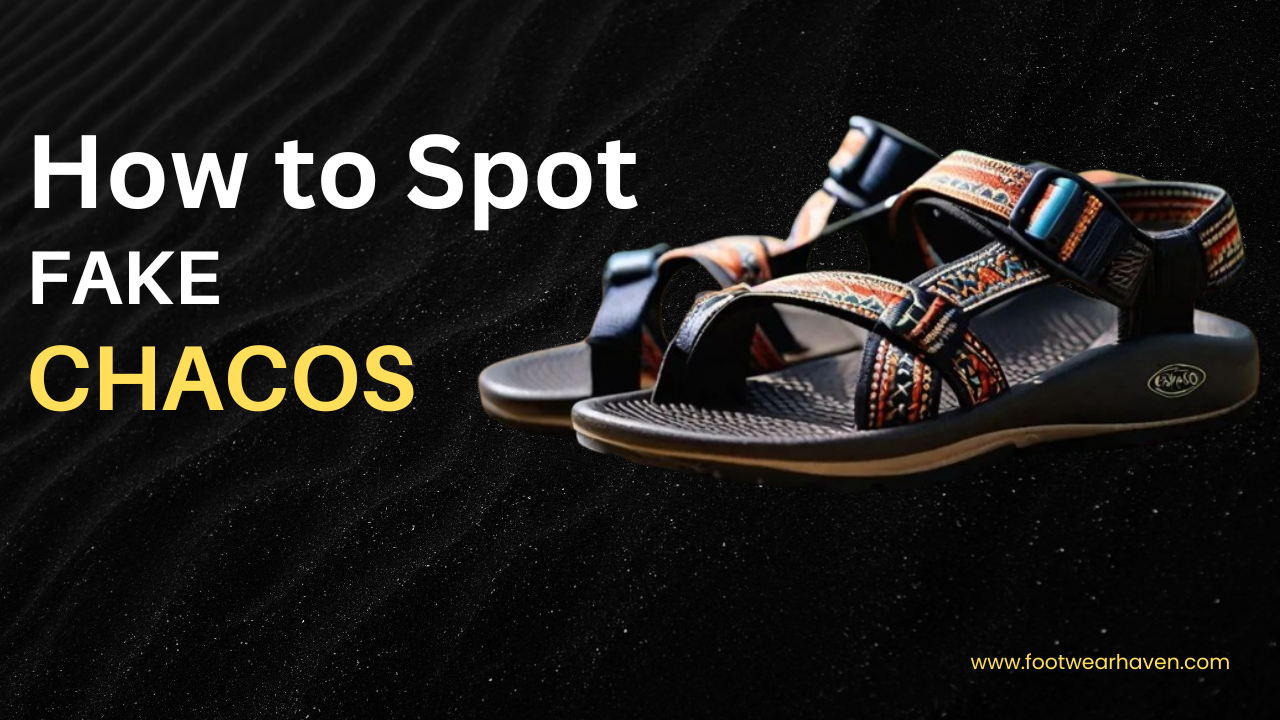The competition between Doc Martens and Timberland brings two iconic footwear brands into focus, each renowned for their durability and unique style. While one hails from the UK and the other from the US, both brands have garnered global admiration for their quality and versatility. Choosing between these two iconic brands is no easy task as both have earned their place among top-tier shoe companies, respected and successful over the years. But why is this so? Also Read : Chacos be strapped It’s simple: both brands have captivated their loyal customers from the start, initially producing work boots for men. Over time, they’ve evolved into versatile footwear giants. For instance, both brands have expanded their collections to include a wide range of footwear designs, not only for men but also for women and children. So, the big question remains: which brand comes out on top? Let’s delve into it: Doc Marten Vs Timberland When browsing through these two incredibly designed boots, whether on the brand’s website or a retailer’s platform, you’ll likely notice that there’s hardly any difference in quality. Both offer exceptional comfort and undergo a robust manufacturing process. Many people own one or the other—or even both—because of their high durability and comfort. The truth is, the choice often boils down to personal preferences. Selecting a specific model, whether from Doc Martens or Timberland, is driven by individual tastes. A buyer has to weigh various factors when deciding between these two brands. For example, considerations like price, style, and purpose of the boots play a significant role in the decision-making process. With those factors in mind, Doc Martens may have a slight edge in this competition. Let’s explore why: Also Read : Hey dudes shrink in dryer Key Differences Between Doc Martens & Timberland We’ll explore both brands’ unique features, focusing on their aesthetics, leather, soles, fit and comfort, and price ranges. Let’s dive into this comparison: Docs VS Timberland’s Aesthetics: Let’s examine two iconic footwear models: Doc Martens’ Standard Issue 1460 and Timberland’s Nubuck 6 boots. Doc Martens: When it comes to Doc Martens’ aesthetics, these boots are known for: Timberland: For Timberland’s aesthetics, these boots are characterized by: Also Read : Doc martens get wet The Leather of Docs VS Timberlands: One major distinction between the two brands is their leather. Here’s how they differ: Doc Martens: Timberland: Note: Nubuck is not to be confused with suede. Nubuck is top-grain leather and more water-resistant and durable. The Soles of Doc Martens Vs Timberlands: Let’s break down the key differences in the soles of both footwear brands: Also Read : Hey dudes get wet Doc Martens: Notably, Docs lack a shank, which means less arch support and reduced stability on varied surfaces compared to Timberlands Note: The work of Goodyear welt is to allow your shoes to get resoled many times but it’s not the case when it comes to Doc Martens because this footwear is manufactured with PVC welt which is a bit less durable and allows your shoe to be resoled for only once. Plus, if you get your Docs to resolve again and again then there is a high chance for them to get fragile, weak, and damaged easily. Timberland: Note: Be mindful of the fact that these boots would not be molded as per your feet’ shape due to the absence of cork in the midsole. However, the steel shank allows them to be resolved. Fit & Comfort of Doc Martens Vs Timberland: Let’s discuss the fit and comfort of both brands: Doc Martens: Also Read : Doc martens over 50 Timberland: Price Ranges Between Doc Marten Vs Timberland: Both brands are well-known, and their prices reflect the quality, design, and features of each model. Doc Marten: Timberland: Final Words: Whether you choose Doc Martens or Timberlands depends on your personal preference.If you’re looking for waterproof shoes with better arch support and traction, Timberland is your best bet. On the other hand, if you prefer footwear that’s softer, easier to clean, and offers better shock absorption, Doc Martens is the way to go.
Foot Pain in Chacos? Here’s What Might Be Wrong
Hey, shoe enthusiasts! Are you considering purchasing a pair of sandals for your next beach adventure or surfing trip? Many opt for Chaco sandals in this scenario. Chacos are undoubtedly great for walking through watery environments, but have you ever wondered: Can Chacos hurt your feet? Generally speaking, Chacos are known for their durability and providing exceptional comfort while walking. And why not? The brand has been offering top-notch services for over three decades, setting the bar high for sandal construction. Also Read : Doc martens in interview However, like any other footwear, Chacos can also lead to discomfort or pain, much like any other shoe. One potential reason for this discomfort is the flat design of the Chaco sandals. There are several other reasons worth exploring to understand why Chacos might cause foot pain. Let’s dive into them without further ado: Can Chacos Hurt Your Feet? If you’ve experienced discomfort during the break-in period of your Chacos, causing aches around the feet, this could lead to unbearable foot pain. The problem doesn’t end there. This situation might also lead to mental frustration. After all, you spent a good amount of money expecting comfortable sandals, but things didn’t turn out as you had hoped. These scenarios can easily make you wonder: Can Chacos hurt your feet? To address this, it’s essential to identify the problem so you can find solutions that will make your feet feel comfortable again. Possible reasons include: Also Read : Doc martens over 50 Let’s dig deeper into these causes to understand the problem and explore ways to fix it. Detailed Description Of Why Chacos Might Hurt Your Feet – Causes & Solutions Improper Fitting Of The Chacos Ill-fitting shoes are one of the primary reasons for foot discomfort. Whether too tight or too loose, improper fitting can lead to blisters or swollen feet, making walking painful. The solution is simple: find the right size and ensure your Chacos fit your feet perfectly. Don’t forget to adjust the straps to secure a snug yet comfortable fit. Chacos’ Lack Of Arch Support Chaco is a well-known brand that provides excellent arch support, offering comfort when walking on challenging surfaces like slippery, greasy, or rocky terrains. The firm footbed plays a major role in this. However, if you have flat feet or need extra arch support, you may still experience discomfort. To address this, measure your feet and compare them with the brand’s sizing guide on their official website. This will help you find the correct size and avoid future discomfort. Also Read : Doc martens in office Inadequate Cushioning Of Chacos Insufficient cushioning in shoes can directly cause foot discomfort. Some Chaco users have reported that the footbed feels stiff and hard, leading to an uncomfortable walking experience. One way to tackle this is by adding a softer insole to your Chacos. Wearing socks with your sandals may also alleviate the problem. Rough Straps Of Chacos Uneven or rough straps can rub against your skin, causing blisters or irritation. To prevent this, adjust the straps carefully. You can also wear socks to protect your feet. The brand provides a strap adjustment guide on its website to help you tie the straps properly. Difficulty In Breaking In Chacos Like most shoes, Chacos require a break-in period. You may need to be patient and wear them for a few weeks before they mold perfectly to your feet. Also Read : Doc martens in the office During this process, it’s common to experience discomfort, such as blisters or sore feet. But with time, these trekking sandals will eventually become more comfortable. Note: The above-mentioned solutions should help address any issues you face with Chacos. However, if the problem persists, consider reaching out to Chaco customer service or consult a shoe specialist for further advice. People Are Also Interested In: What Can I Do If Chaco Sandals Hurt My Feet? If you find yourself in this uncomfortable situation, try adjusting the straps for a better fit. You can also wear socks and insert cushioned insoles for additional comfort. Is Your Hard-Earned Money Worth Chacos? It depends on personal preferences. Some people are willing to endure the initial discomfort to enjoy the long-lasting benefits of durable footwear. Others may prefer more immediate comfort. It’s important to try them on and give them time before deciding. How Long Does It Take To Break Into Chacos? The break-in time for Chacos varies from person to person and depends on how much they are worn. New Chaco users may need to wear them a few times before the sandals fully adapt to their feet. Some people, however, find them comfortable right out of the box. Final Words While Chacos may cause discomfort for some wearers, others find them incredibly comfortable from the first use. It’s recommended to try them on and wear them for an extended period before deciding whether they’re the right sandals for you.
Struggling With Chaco Toe Straps? Here’s What to Do
Hello friends! Have you heard of a footwear brand called “Chacos”? It’s widely known for making sandals that are both comfortable and supportive, perfect for outdoor adventures. If you’re familiar with them, you might be planning to take these popular summer shoes on your hiking or backpacking trips. A common question for new Chaco buyers is: Can you adjust Chaco toe straps for a perfect and comfortable fit? Also Read : Chacos vs knees Don’t worry about this, as we’ve gathered all the information to answer this for you. Many new Chaco users might not be aware of some of the great features these sandals offer. Let’s dive into this guide to understand how you can adjust the Chaco toe straps and make your sandals even more comfortable. Can You Adjust Chaco Toe Straps? Chaco has always been dedicated to providing its customers with maximum support and comfort. This is nothing new, as the brand has been delivering outstanding service for over three decades now.So, would this iconic footwear company fail you by making sandals that can’t be adjusted?The clear answer to the question “Can you adjust Chaco toe straps?” is “Yes, you absolutely can!” And why wouldn’t you? These sandals are designed with adjustable straps, offering not only a comfortable ride but also a customized fit. There are some simple steps to follow to ensure your Chacos fit perfectly by adjusting the toe straps. Let’s explore them: Key Ways to Adjust Chaco Sandals: Steps & Tips You can depend on Chaco sandals for a perfectly fitted shoe with adjustable straps. Wondering how? It’s because these sandals allow your feet to stay stable as soon as you put them on. Also Read : Chacos vs bedrock Plus, Chacos provide a firm grip, protecting you from tripping or falling on rocky, slippery, muddy, oily, or uneven terrains. Let’s see how it works: Steps to Adjust Chacos: A Few Tips to Remember Before Adjusting Chacos: One important tip to remember is not to tighten your straps too much, as this can limit blood circulation in your feet. This could lead to several uncomfortable and even painful health issues like numbness, tingling, or nerve damage. Negative Impacts of Wearing a Constricted Pair of Chacos: Wearing poorly-fitted Chacos can cause several negative effects, including: Worse yet, prolonged use of ill-fitting sandals could lead to: Note: Individuals with diabetes or nerve damage should be extra cautious, as ill-fitting shoes can worsen their condition, leading to swelling, cuts, or infection. Thus, make sure your Chacos are properly fitted, providing both comfort and support for your feet. People Are Also Interested In: How Can I Adjust the Toe Straps on My Chaco Sandals? To adjust the toe straps on your Chacos, start by locating the buckle on the strap. Then, loosen the strap using your fingers by pulling it out of the buckle. Also Read : Doc martens good for rain Once the strap is loose, slide it into your desired position and tighten it back by pulling it through the buckle, but not too tight, ensuring a snug fit. How Do I Know If My Chaco Toe Straps Are Adjusted Properly? The right fit for Chacos depends on personal preference. Generally, you want to feel a snug, “hug-like” sensation around your feet. Your feet should feel supported without restriction or discomfort. If your foot is sliding or feeling constricted, it’s a sign you need to adjust the straps again. Can I Adjust the Chaco Toe Strap While Wearing Them? Yes, it is possible to adjust your Chaco toe straps while wearing them. However, it’s easier to adjust the straps when the sandals aren’t on your feet. Is There Any Way to Ensure That My Chaco Toe Straps Are Adjusted Equally? To ensure your Chaco toe straps are evenly adjusted, compare the position of both straps. You may need to modify the fit for each foot, as some people have slight differences in foot size or shape. How Often Should I Adjust the Toe Straps on My Chaco Sandals? The frequency of adjusting your Chaco straps depends on your personal needs and preferences. Some people adjust them often, while others rarely do. Also Read : Chacos wide vs medium If your sandals start feeling uncomfortable or your feet are sliding, it’s time to readjust the straps. Final Words You can absolutely adjust the straps on your Chacos. These sandals are designed with adjustable straps to provide an ideal fit and maximum comfort.Additionally, you can always contact Chaco customer service for further assistance or queries.
Do Chacos Run Big or Small? Find the Right Fit for Your Feet
So, do Chacos run big or small? For most people, Chacos fit true to size, but some users find they run a little large—especially if you’re between sizes. The good news is that their adjustable straps and different width options make it easy to achieve a secure, customized fit. If you’re buying your first pair, knowing whether to size up or down will save you from discomfort and ensure long-lasting comfort on the trail. In this guide, we’ll break down exactly how Chacos fit, when to size up, and how to adjust them for the perfect feel. Now, let’s dive deeper into understanding the Chacos sizing guide: Does Chacos Run Big Or Small? Most Chaco sandals fit true to size for most users, but some people have found them to be slightly larger than their regular size, leading to heel slippage, which could cause you to trip. So, be cautious of wider sandals. A good tip is to order your Chacos in your regular size, but if your feet fall between sizes, it’s often best to size up to the next whole size. One important thing to remember is that Chacos come with adjustable, flexible straps that provide a customizable fit. So, even if the footbed feels a little larger than usual, you can still achieve a snug fit by adjusting the straps properly. Also Read : Hey dudes laces too long To do this, tighten the buckle or adjuster to a point where you feel a snug, but not too tight fit around your feet. Be cautious of overly tight shoes as they can restrict blood flow, cause numbness, tingling, or even nerve damage. Still unsure about which size to order? There are two quick ways to figure it out: This small step will help you determine the best size for your Chacos. How To Determine If Chacos Run Big or Small – A Detailed Overview Chacos sizing can vary depending on individual foot characteristics like arch shape, foot width, and length. Also Read : Doc martens be resoled Most Chaco users suggest going up a size if you are new to the brand. For example, if you wear a size 8.5, you may want to choose a size 9 for a more relaxed fit. If you find your Chacos either slightly loose or tight, you can solve this issue by adjusting the straps, as the shoes have an adjustable strapping system. Whether you own sandals from the Z/1 or Z/2 Chaco collections, you can ensure a great fit by properly adjusting the straps. Here’s how you can tie your Chaco straps for the perfect fit: Key Ways to Tie Chaco Straps for a Snug Fit: A perfectly adjusted pair of Chaco sandals will not only keep your feet comfortable but will also protect them from potential injury due to the strong grip and excellent support. To ensure this, focus on two key areas: Let’s dive into more detail: Also Read : Doc martens get wet The Adjustment Process of Chacos: Chacos are designed with a webbing strap system that runs through the sole. For the best fit, you can pull the webbing through the adjuster or buckle to reach your desired level of tightness or looseness. The fit depends entirely on your preferences—pretty cool, right? Additionally, there are three key adjustment points for a secure fit around your feet: You can also adjust the straps at the back of the sandal. Here’s how it works: An Important Note on Chaco Styling vs Size: Consider the style of the Chaco sandal when choosing your size, as different styles may fit differently. For instance, the Z/1 style includes a toe loop that can impact the fit, while the Z/2 style has a toe strap for a more secure and comfortable fit. It’s best to try on a few different styles to find what suits you before making a purchase. People Are Also Interested In: Should I Go Up Or Down When Choosing Chacos? It depends on your foot shape, size, and personal preferences. If you like a looser fit, you might want to size up, or you can choose sandals with a wider width. On the other hand, if you prefer a snug fit or have narrow feet, you may want to size down from your standard size. It’s still best to try them on before buying. Will My New Chacos Stretch Over Time? Chacos are designed to mold to your feet, but they won’t stretch significantly over time. If your Chacos feel too tight, it’s best to exchange them for a larger size rather than waiting for them to stretch. What If I Ordered the Wrong Size Chacos? Don’t worry! Chacos offers a return policy where you can return unworn, unwashed, and unaltered shoes within 30 days. If you order the wrong size, simply return them for the correct size. Final Words Chacos tend to run true to size for most people, but sizing can vary depending on individual foot needs. Some people find them tight, while others find them loose. Fortunately, Chacos offer both regular and wide widths, so you can find the right fit for a comfortable walk. Choose wisely for a secure fit.
How Long Do Chacos Last? A Complete Guide to Their Lifespan
If you’re asking “How long do Chacos last?” the simple answer is that, with proper care, they can last anywhere from 3 to 5 years—and in many cases, even over a decade. Built for durability, Chacos are trusted by outdoor enthusiasts because they’re designed to handle rugged trails, water, and daily wear without losing comfort or support. Understanding their average lifespan and how to maintain them ensures you get the best value from your investment. Let’s take a closer look to find out how long Chacos can last. How Long Do Chacos Last? The main idea behind making Chacos is to create footwear that can handle tough terrains while providing maximum support, a feature that the brand has consistently delivered to its loyal customers. So, you don’t need to worry about rough surfaces when wearing Chacos. Whether the trail is rocky or slippery, or whether the weather is rainy or sunny, these shoes will provide supreme comfort along with a durable footbed that offers excellent arch support for a smooth journey. The lifespan of Chacos largely depends on several important factors, such as: When it comes to their average lifespan, Chacos, with proper care, can last anywhere from 3 to 5 years, and in some cases even up to 10 years, depending on usage and the factors mentioned above. Now, let’s dive deeper into the key features of Chacos that make them so durable and extend their longevity. Significant Features of Chacos: Durability & Longevity There are several impressive materials used in the construction of Chacos that greatly contribute to their durability, making them ideal for challenging terrains. Let’s explore these features: Also Read : Are my chacos too big Comfort Level of Chacos: Chacos have excelled in creating sandals with a highly durable footbed that provides excellent arch support and balanced cushioning for your feet. These features—arch support and cushioning—make Chacos an extremely comfortable choice for extended wear. Another great feature of Chacos is the adjustable straps, which allow for a customized fit that can accommodate a variety of foot shapes and sizes. Long-Lasting & Cost-Effective Choice for Users: Chacos are a fantastic option for outdoor enthusiasts as they are not only cost-effective but also known for their long-lasting materials. With proper care and maintenance, they can last for several years. So, if you’re looking for a reliable pair of sandals, you can trust Chacos to provide durability and comfort. The Versatility of Chacos: Chacos offer a wide range of footwear suited for various outdoor activities, such as hiking, water sports, surfing, beachcombing, and backpacking, along with camping in challenging terrains like steep, boggy, muddy, slippery, or rocky paths. Exciting, right? Not only that, but Chacos are also a popular choice for everyday wear. And why not? They can easily complement both casual and more dressed-up outfits, depending on the occasion. Also Read : Can chacos be strapped Feet’s Well-Being in Chacos: Chacos sandals are designed to take care of your feet by offering strong support and stability on different surfaces. This feature not only helps improve your gait but can also alleviate common foot issues, like heel pain and plantar fasciitis (PF), a condition that causes pain beneath the foot. People Are Also Interested In: Is There Any Kind of Specific Maintenance that Chacos Require? To extend the lifespan of your Chacos, it’s essential to take care of them by cleaning them regularly with mild soap and water. Afterward, allow them to air dry before wearing them again. Additionally, to further preserve their longevity, it’s important to store your Chacos in a cool, dry place, away from direct sunlight or heat sources. Can I Get My Chacos Repaired? Yes, definitely! The brand offers a repair service known as “ReChaco.” This service includes replacing worn-out straps, buckles, or soles. You can also use a third-party cobbler for repairs. Are Chacos Worth the Investment? Also Read : Doc martens over 60 This depends on personal preferences. Some people appreciate the long-term comfort and support that comes after breaking in their Chacos, even if there’s some initial discomfort. On the other hand, some may prefer footwear that feels comfortable straight out of the box. So, try wearing Chacos first and then decide if they’re the right fit for your long-term use. Final Words: Putting in a little effort to care for your Chacos will help extend their lifespan and keep them in good condition for years to come. With proper maintenance, Chacos can last from 3 to 5 years, and in some cases, even longer—some customers have reported wearing them for over a decade. Isn’t that impressive? So, what are you waiting for? Grab a pair and enjoy your next adventure with the comfort of Chacos!
How Should Chacos Fit Your Feet? A Complete Sizing & Comfort Guide
Wondering how should Chacos fit? The answer is simple: they should feel snug and supportive without being uncomfortably tight. Chacos are built with adjustable straps and a contoured footbed, allowing you to customize the fit for stability and comfort during any activity. Getting the right fit not only prevents blisters and strain but also helps you get the most out of these durable outdoor sandals. For new Chaco buyers, it’s important to know how to adjust and break in the sandals for a comfortable fit. How Should Chacos Fit? The simple answer is: “Chacos should fit snugly but not too tight.” Why? Because overly tight sandals can lead to a variety of health problems. Footwear that is too tight can hinder blood circulation, which may result in tingling, numbness, and even nerve damage. Wearing ill-fitting Chacos can also cause discomfort in the form of blisters, knee and heel pain, or backaches. In extreme cases, poor-fitting sandals can lead to more serious health conditions, including bunions (a bony bump in the big toe joint), ingrown toenails, hammertoes (deformed middle toe joints), or athlete’s foot (a fungal infection between toes). Note: Diabetic patients or those with nerve damage should be extra cautious when choosing their Chacos to avoid exacerbating existing conditions. Chaco Sandal VS Your Valuable Feet: Sizing Measurement & An Ideal Fit Having a well-fitted sandal is crucial for providing your feet with the support they need, especially when walking on challenging terrains. Also Read : Doc martens over 50 To ensure a good fit, measure your feet before purchasing Chacos. You want the sandals to feel snug but not overly tight on your feet. Measurement Of Your Feet: Here are some easy methods and tips to measure your feet before buying Chacos: Recommendations: Measure your feet in the afternoon when they’re slightly swollen. Stand on a flat surface while measuring. If you plan to wear socks with your Chacos, measure your feet while wearing them. Record the length and width of both feet separately since sizes may vary slightly between them. Tips: Place a piece of paper under your foot while standing. Use a pencil to trace the outline of your foot on the paper. Measure from heel to toe and across the widest part of your foot. Compare these measurements to the brand’s size chart below. Chaco Sizing Guide or Chart: Before making a purchase, be sure to check the brand’s sizing chart to match your measurements with their offered sizes. Let’s dive into the Chaco sizing chart: Also Read : Doc martens wear in 60 Chaco Footwear Sizing Chart: For Women: The brand also provides different sizes for children’s footwear. How great is that? If you order online and the sandals don’t fit properly, no worries! The Chaco return policy allows you to return unworn, unwashed, and unaltered items within 30 days of shipment. People Are Also Interested In: How Should Chaco Sandals Fit? Chacos should fit snugly on your feet. Adjust the straps to ensure your feet stay in place, but not so tight that they restrict circulation. Does A New Pair of Chaco Feel Tight on Your Feet? Yes, new Chacos might feel a little tight at first. They need time to break in and mold to your feet. If they cause significant pain, consider exchanging them. How Do I Get The Right Size of Chacos? Measure your feet as outlined earlier, compare your measurements to the brand’s size chart, and make your purchase. If discomfort persists, you can return the sandals within 30 days. Final Words: Chacos should fit snugly but not too tight to allow proper blood circulation. Be patient during the break-in period, and adjust the straps as needed. Use the sizing chart to select the correct size. Good luck!
Adjusting 2-Strap Chacos: Tips for Comfort and Style
If you’re wondering about adjusting 2 strap Chacos (Z/2 sandals), the process is simple: loosen the straps starting from the toe loop, pull them through the buckle to tighten, and then secure the fit around your foot. These sandals are designed with durable yet flexible webbing, so once you learn the adjustment steps, you can easily create a snug and comfortable fit. In this guide, we’ll show you exactly how to adjust 2 strap Chacos step by step, along with tips to make them more comfortable for hiking, walking, or everyday wear. How To Adjust Chacos With 2 Straps? As long as you know how to adjust Chacos with 2 straps, you are good to go. If not, then do not get anxious as we have got your back. As far as concern goes to Chaco adjustment then these masterpieces are crafted with extremely durable material which is the reason why they might feel a bit sturdy in the initial days of wearing them. The straps of Z/2 Chaco sandals are manufactured with polyester jacquard webbing which inserts flexibility in them which makes these straps extremely pliable and adjustable according to personal preference or individual needs. However, the question remains how to adjust these Chaco straps? If we quickly explore a few impressive adjustment ways to tie z/2 Chacos then it includes toe loop adjustment, buckle adjustment, and strap adjustment. Stick with us to have a deeper look at the prior mentioned ways to adjust Z/2 Chacos for several outdoor activities such as hiking, walking, backpacking, beachcombing, surfing, and many more. Significant Ways To Adjust Z/2 Chacos: The Z/2 strapping of Chacos works wonders in furnishing your feet with a secure and comfortable fit. Plus, these straps are an important part of the overall design of Chaco sandals, which are known for their durability, versatility, and support. For that reason, let’s see how it works: Also Read : Doc martens in 60 Z/2 Chacos often come with a toe loop whereas the method of adjusting Z/2 Chacos with a toe loop has only one difference. You need to cross the straps over the top of your foot, making an “X” shape just before threading the straps through the opposite buckle. People Are Also Interested In: What Is The Difference Between Z/1 And Z/2 Chacos? There are no major differences between Z/1 and Z/2 Chacos except one that Z/1 shoes have a single strap that goes over the top of your foot. Whereas, on the other hand, Z/2 Chacos have an additional strap that goes around the back of your heel. How Do I Tie My Z/2 Chaco Sandal? You can follow the regular strap adjustment method to tie your Z/2 Chacos which is mentioned above in detail. However, there is only one slight difference between tying Z/2 shoes for the regular tying-up method. All you have to do is to make an “X” shape by crossing the straps over the top of your foot right after threading the straps through the buckle or adjuster. How Do I Adjust The Straps On My Chacos? To achieve the goal of adjusting the straps on your Chacos you have to use the ladder-lock buckle. To create a perfect fit, you should slide the buckle up or down to tighten or loosen the straps. Final Words: States that tying Chacos with two straps or Z/2 Chacos is a not very demanding or difficult method as you only have to create an X shape of straps right after the step when you thread the straps through the buckles to produce a snug but not too tight fitted pair of Chaco shoes.
Breaking In Chacos: Tips for Comfort and Durability
Have you recently bought a fresh pair of Chacos and are now wondering if breaking them in is easy or how to break them in? Many wise individuals have mentioned that neglecting your feet by not providing them with a comfortable pair of shoes can cost you dearly in the long run. And why wouldn’t it? A single wear can either make or break your entire day. Therefore, just like any other shoe, it’s crucial to be extra cautious with the breaking-in process once you get a new pair of Chacos. Let’s explore how you can break into Chacos effectively. How To Break In Chacos? We all know Chacos are widely recognized for their longevity and durability, but some customers may find them a bit stiff or firm on their feet during the initial wear. However, if this happens to you, there’s no need to worry or feel frustrated, as breaking in your Chacos takes a little time. For the perfect fit and comfortable feel, a bit of patience is required. Like most new shoes, Chacos might initially cause blisters or swollen feet. Also Read : Doc martes wear in 60 Given that, enduring through the initial phase with Chacos is worth it. Want to know why? It’s because this footwear is designed to provide optimal support and ultimate comfort once your feet adjust to them, ensuring a great experience for the long haul. So, it’s worth the wait as you’ve spent good money to reach your comfort zone with Chacos. Let’s delve deeper into some methods for breaking in your Chacos with ease: Impressive Ways To Break Into Chaco Sandals: Tips & Steps When comparing a new pair of Chacos to an older one, you’ll likely notice a distinct difference, as new Chacos tend to feel sturdy and hard. This is because they are built for a variety of tough terrains, such as slippery surfaces, rocky paths, oily tracks, and more. Thus, breaking them in might take some time due to the firm footbed and durable straps, but with time, they will become more comfortable. It’s recommended to buy your Chacos a few weeks in advance if you plan to use them on any hiking, surfing, or backpacking trips. Also Read : Doc martens and chelsa boots Here’s a closer look at the steps to speed up the break-in process for Chaco sandals: A Few Tips To Remember Before Breaking Into Your Chacos Sandals: People Are Also Interested In: How Long Does It Take To Break Into Chaco Sandals? The time required to break in Chacos depends on personal preferences and individual needs. For most people, a few weeks of consistent wear will be enough to achieve a comfortable fit. Some individuals, however, find them comfortable right from the first wear. What Should I Do If My Chacos Are Giving My Feet Blisters? If you experience blisters during the break-in period, don’t get discouraged. Instead, take a break from wearing them to allow your feet to heal. Once your blisters are gone, try wearing your Chacos again. Don’t forget to use moleskin padding or blister pads to protect your skin and prevent further irritation. Can I Speed Up The Breaking-In Process? Also Read : Doc martens in interview The best advice for speeding up the break-in process is to wear your Chacos for short periods daily instead of wearing them for long stretches right away. Prolonged wear can lead to more discomfort and pain. Is It Necessary To Wear Socks With My Chacos During The Break-In Process? Whether or not to wear socks is a personal choice. Some people prefer pairing their Chacos with socks, while others don’t. However, keep in mind that wearing socks may alter the fit of the sandals, so you might need to adjust the straps accordingly. Final Words : Breaking into Chacos requires patience and persistence. Wearing them regularly around the house in short intervals will help ease the process. Just be sure to avoid wearing them for long periods right away.
Loosen Chacos Like a Pro: Step-by-Step Guide for a Comfy Fit
Hey, Chaco Fam…! Have you ever found yourself in an annoying situation where your Chacos sandals feel a bit tight on your feet? This could lead you to wonder how to loosen your Chacos for a more comfortable and perfect fit. It’s worth noting that Chacos are renowned for creating well-fitted footwear. These sandals are designed to provide a highly supportive fit that allows for comfortable walking. Curious to know why? Also Read : Doc martens in interview The reason is that Chaco sandals come equipped with adjustable straps that are soft, flexible, and can adapt to the shape and size of your feet. If your Chacos feel too tight, it’s likely due to the strap adjustment, which can easily be fixed with minimal effort. Let’s explore how this works: How To Loosen Chacos? For over three decades, Chaco has been delivering top-notch products. It’s important to acknowledge the expert craftsmanship of their shoemakers who continuously create exceptional products for their valued customers. However, at times, Chacos may feel snug on the feet of some users, especially those with high-volume feet. Thus, it becomes essential to figure out effective ways to loosen your Chacos, ensuring that wearers don’t experience any discomfort or issues. Here are some simple solutions and tips you can try at home to loosen your Chacos, such as: Let’s dive into the details: Also Read : Doc martens to a weadding Effective Ways to Loosen Chaco Sandals: Chaco’s mission is to promote foot health and comfort. However, wearing tight footwear can result in issues like swollen feet, rashes, and painful blisters. Furthermore, overly tight straps can restrict blood flow, leading to numbness, tingling, and in severe cases, nerve damage. Let’s take a closer look at how to loosen Chacos without further delay: Adjusting the Straps of Your Chacos: Chaco sandals come with highly durable, flexible straps that can be adjusted to suit individual preferences. These straps ensure a secure fit for maximum comfort during walks. The straps can be easily tightened or loosened by pulling them through the buckle or adjuster located on the side of the sandal. Another great feature is the use of polyester jacquard webbing, a strong material that adds to the durability of the straps. You can adjust the straps at two key points to achieve the right fit: If your Chacos feel tight beyond these areas, you can take advantage of Chaco’s repair service, “ReChaco,” which offers solutions for strap-related issues. Also Read : Doc martens vs solovair This program also promotes sustainability by recycling materials from worn-out Chacos into new products like dog leashes, tote bags, or even new sandals. Using a Strap Extender: If your Chaco sandals feel tight, you can always extend their length with a strap extender. By attaching an extra strap to the existing ones, you can increase their length, allowing for a more customized and comfortable fit. This solution is particularly useful for people whose feet may swell after long hikes or for those with naturally wider feet. Wondering where to get these extenders? The Chaco brand offers them, so you can easily purchase one to enhance the comfort of your sandals. Soaking Your Chacos in Water: If the previous solutions don’t work, try soaking your Chacos in water. This process helps soften the material, making it more pliable and easier to adjust. Simply dip your sandals in water for a few minutes, then let them air dry naturally. Once dry, your Chacos will feel softer and more flexible, providing a more comfortable fit. Pairing Your Chacos with Socks: Wearing socks with your Chacos can help stretch them out effectively. You can either wear the socks or tuck them inside the sandals in small balls. If you choose the latter option, leave the socks in overnight or for a full day. You can repeat this process for several days to achieve your desired fit. Wearing socks with Chacos can also add cushioning, reduce friction, and prevent blisters, providing a snug fit without discomfort. Using a Shoe Stretcher: Inserting a shoe stretcher into your Chacos is another effective way to loosen them. A shoe stretcher helps widen, lengthen, and increase the height of tight-fitting footwear. Most stretchers come with a small metal knob that fits into the holes of the stretcher. Once inserted, twist the back handle to apply tension and stretch the straps. Be cautious not to overstretch, as this could break the straps. Let the stretcher remain in the sandals for a few hours, and repeat as necessary for optimal results. Note: There are various types of shoe stretchers available, each designed for different footwear. Some stretch both the width and length of the shoe, while others focus solely on the width. Be sure to follow the instructions carefully when selecting the right one for your needs. Final Words: While Chaco sandals are designed to fit well, some users may find them too tight. The first step is to measure your feet and compare them with Chaco’s sizing chart befre purchasing. If tightness persists, you can use several easy methods at home to loosen them, such as adjusting the straps, using strap extenders, soaking them in water, wearing socks, or using a shoe stretcher. Full details are provided above.
Spotting Fake Chacos: What You Need to Know
Hey, Chacos Fam…! Have you ever found yourself in the frustrating situation of dealing with fake retailers and ending up scammed by purchasing a counterfeit pair of Chacos? This situation can certainly heighten your anxiety about encountering fraudsters, leaving you wondering how to identify fake Chacos in the future. If you’ve ever been caught in such a dilemma, there’s no need to stress further. We’ve gathered a few crucial and effective tips to help you spot fake Chacos. Also Read : Doc martens over 40 Spotting scammers or fake sellers is a significant concern for consumers, especially when shopping online, as you often can’t discern the seller’s true intentions. So, if you want to be completely certain about distinguishing real from fake Chacos, you’ll need a sharp eye and close attention to detail. A vital question arises: what are the methods for identifying fake Chacos in both marketplaces and online retail centers? To answer this, let’s dig deeper into how you can verify the authenticity of Chacos: How To Spot Fake Chacos? Chacos can either be your favorite or least favorite sandals depending on how well you can spot real versus fake pairs. To join the true Chaco Fam, you must learn to recognize the original pairs. First and foremost, always purchase your footwear from the official brand website. If the item you’re looking for is unavailable, you can turn to other trusted retailers. Before clicking “add to cart,” always compare the product on the retailer’s site with the description of the footwear on the brand’s official website. This is one of the best methods to spot differences between authentic and fake Chacos. Other useful methods for identifying fake Chacos include examining the following aspects: Let’s dive into these tips and techniques to swiftly detect fake Chacos and avoid getting deceived by scammers who target well-meaning buyers in the shoe market. Also Read : Doc martens work at star bucks Six Simple Yet Effective Ways To Spot Fake Chacos: A Detailed Buyer’s Guide Inspect The Brand’s Logo: Start by closely examining the logo on your Chaco sandals. The brand’s logo should be clear, sharp, and evenly spaced between letters. Why is this important? Because many fake Chacos have distorted or blurry logos that are poorly attached to the shoes. Additionally, always compare the font of the logo between real and fake Chacos, as fake retailers often use slightly altered fonts. Check The Shoe’s Stitching: Examining the stitching is an essential part of detecting fake Chacos. And why not? Chacos are renowned for their durable, high-quality stitching that extends the life of the shoes. Pay close attention to the stitching to spot any irregular or messy sewing that could indicate fake Chacos. Even a small patch of loose thread can be a warning sign. If the stitching appears uneven or if threads are coming loose, it’s best to avoid purchasing the pair, as these are likely counterfeit. Examine The Fabric Or Material: To determine whether Chacos are fake, inspect the overall material of the shoe. If it feels flimsy or is made from cheap fabric, you may be looking at a counterfeit pair. Another key indicator is that fake Chacos often use stiff, non-flexible materials, whereas genuine Chacos are known for being durable and flexible, allowing them to last longer. Also Read : Doc martens with skinny jeans Pay Attention To The Strap Placement: When checking the straps, make sure they are solid and not made from low-quality materials. Remember, authentic Chacos feature adjustable straps that provide comfort and a custom fit. One more detail to observe: the buckles. Fake Chacos often have plastic buckles, while genuine ones always use metal buckles. Inspect The Soles: Chaco is known for its sturdy, thick soles, so if you come across sandals with a Chaco logo but flimsy, thin soles, avoid them as they may wear out quickly. Always opt for Chacos that feature durable, well-made soles. Compare The Prices: Keep in mind that scammers often sell fake Chacos at significantly lower prices than the original retail price. Genuine Chacos tend to be a bit pricey, reflecting their quality. If the price seems too good to be true, the shoes are likely fake. Don’t fall for cheap pricing tricks. People Are Also Interested In: Why would someone want to spot fake Chacos? Spotting fake Chacos is essential for the health and comfort of your feet. Fake Chacos don’t perform nearly as well as the real ones due to their poor-quality materials. Also Read : Doc martens vs blundstone Can I spot fake Chacos by looking at the packaging? Yes, you can often spot fake Chacos just by examining the packaging. Original Chacos come in a box with the Chaco logo and are wrapped in tissue paper. To detect fakes, look for two signs: Where can I buy Real Chacos? You can buy genuine Chacos from authorized retailers like: Final Words: Make sure to follow these tips before spending your hard-earned money on Chacos.We’ve outlined some effective ways to help you spot fake Chacos. Take a couple of minutes to read through these tips and protect yourself from scammers.It’s recommended that you always purchase your sandals from official websites like Chaco’s own site or from trusted retailers like REI.


